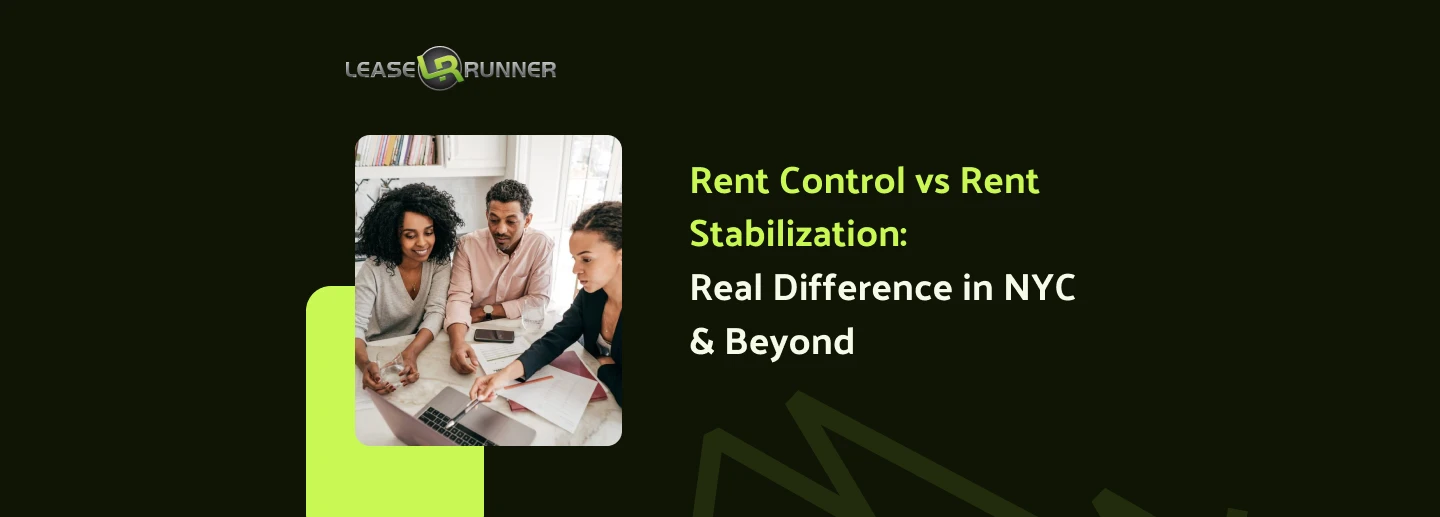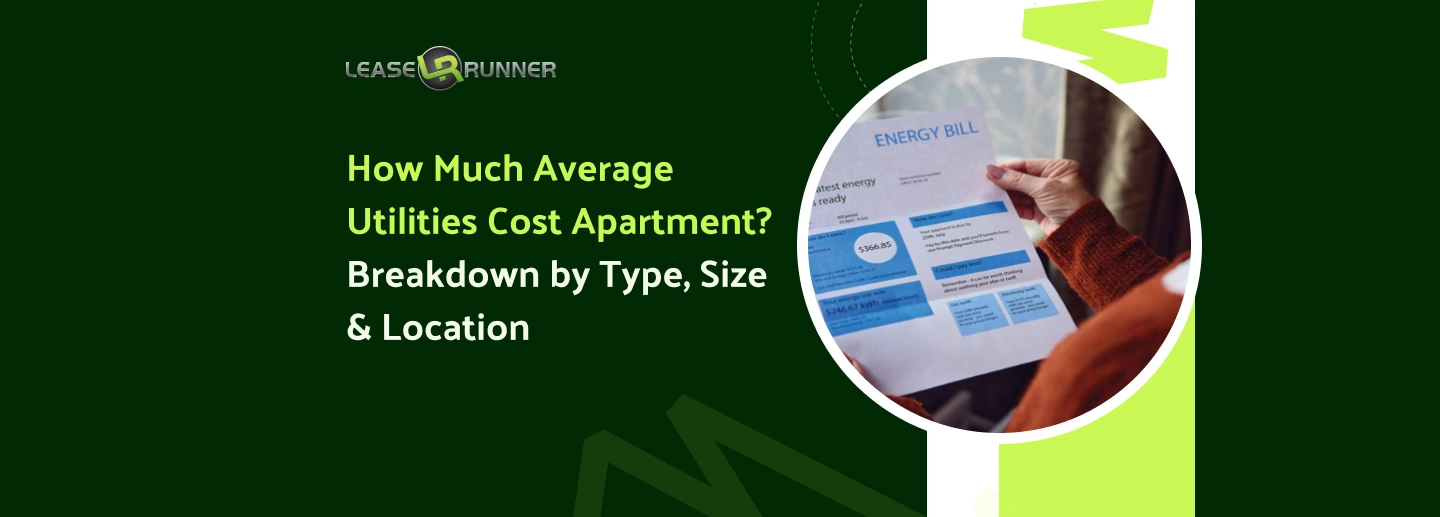Rent rules can seem hard to follow. If you are a tenant or landlord, you may ask: rent stabilized vs rent controlled, which one applies to your unit? In this article, we will explain the basics with clear, simple language.
Understanding the details about rent stabilized vs rent controlled apartments is useful for both tenants and landlords. Tenants can estimate how much reRent Increase Limitsnt they need to pay, while landlords can see how much they are allowed to increase. Let’s begin with a quick summary table before going into deeper comparisons.
First, we begin with a Quick Facts table that shows you six of the most-searched points about these housing rules.
Quick Answer: What’s the Difference Between Rent Stabilized vs Rent Controlled?
Featured Snippet about “rent stabilized vs rent controlled”
Rent stabilized vs rent controlled is one of the most common rental questions in New York City.
Essentially, rent stabilized vs rent controlled comes down to flexibility. Stabilized apartments allow limited growth, while controlled apartments hardly change at all.

What Is a Rent-Controlled Apartment?
A rent-controlled apartment is a rental unit where state or local laws strictly limit how much a landlord can increase the rent each year. Unlike market-rate apartments, rent-controlled units are regulated to keep prices stable, often resulting in tenants paying significantly below current market value. These apartments are usually found in older buildings and are often occupied by long-term residents.
For example, New York City enforces rent control through housing boards that cap annual increases to small percentages. In California, the Tenant Protection Act of 2019 limits yearly rent hikes to 7% (5% plus the regional Consumer Price Index), covering more than 95% of multi-family units statewide. These laws ensure affordability even as market rents continue to rise.
If you’re a landlord considering how to set rental rates fairly, you can explore more in our guide on how much rent should I charge.
What Is a Stabilized Apartment?
A rent-stabilized apartment is a unit where rental increases are regulated by the local Rent Guidelines Board. Each year, the board sets the maximum percentage by which landlords can raise the rent, often ranging from 1% to 5% annually, depending on lease length and market conditions. You can read more about how rent increases work in different states, such as month-to-month rent increase in California.
In New York City, for example, most rent-stabilized apartments are found in buildings with 6 or more units built between 1947 and 1974. Tenants living in these apartments benefit from two key protections:
- Right to renew their lease at the end of each term.
- Protection from arbitrary eviction, as landlords must follow legal procedures and valid grounds.
While rents may rise, the increases are both predictable and limited, giving tenants greater housing stability compared to market-rate apartments.
Rent Stabilized vs Rent Controlled: A Detailed Comparison
Both rent control and rent stabilization aim to protect tenants, but they work differently. Here’s a clear comparison to help you see the distinctions:
Rent-Controlled Apartments
Rent-controlled apartments are the oldest and most rigid form of rent regulation in New York. They are extremely rare and almost impossible to find on the current market. This is a key difference in the discussion of rent stabilized vs rent controlled.
- Strict Rent Limits: The rent is tightly regulated, and increases are only permitted under specific, highly controlled circumstances, such as significant building-wide improvements.
- Older Buildings: These regulations apply to a very limited number of older buildings, making the units themselves a relic of the past.
- Stable & Low Rent: The primary benefit is a stable and significantly lower-than-market rent, providing a major financial advantage for the tenant.
- Strong Tenant Protections: Tenants have a powerful right to stay in their apartments for life and can, under certain conditions, pass their tenancy on to a family member.
- Extreme Scarcity: Due to these strict regulations and the limited number of eligible buildings, rent-controlled apartments are exceptionally rare and almost impossible to find on the market today.
Rent-Stabilized Apartments
Rent-stabilized apartments are far more common and apply to a much larger pool of buildings in NYC. They typically cover buildings with six or more units constructed between 1947 and 1974. The main features of rent-stabilized units are:
- Controlled Annual Rent Increases: Rent increases are capped at a percentage set annually by the Rent Guidelines Board. This rate applies to both one-year and two-year lease renewals. This distinguishes a rent stabilized vs rent controlled unit.
- Broader Applicability: This system affects a significant portion of NYC's housing stock, making these units much more accessible to the average renter than rent-controlled ones.
- Predictable Increases: Since the rent increase percentage is announced each year, tenants can more easily budget for their housing costs in the future.
- Tenant Protections: Rent-stabilized tenants are protected from unwarranted eviction and have the right to essential services, but they do not have the ability to pass on their tenancy rights as in rent-controlled apartments.
- Lease Renewal Rights: Tenants have the right to renew their lease indefinitely. A landlord can only refuse to renew a lease under specific, legally defined circumstances, such as a tenant's violation of lease terms.
When you think about rent control vs. rent stabilization in NYC, these points show that each system has its own pros and cons, directly impacting your budget and long-term stability:
- Availability: Rent-controlled units are extremely rare, while rent-stabilized ones are far more common. This is a crucial distinction in the rent stabilized vs rent controlled debate.
- Tenant Protection: Both offer protection, but rent control provides stronger rights, including the ability to pass on the tenancy.
- Rate of Increase: Rent-controlled units have minimal and rare rent increases, while rent-stabilized units have annual, regulated increases.
While rent control often results in drastically lower rents compared to market rates, rent stabilization focuses on predictable, regulated increases that keep housing more affordable than unrestricted units. Despite these protections, landlords usually apply the three times the rent rule when screening tenants, ensuring that income standards align with affordability under both systems.
Pros and Cons: Rent Control vs Rent Stabilization

When you look at the rental market, you often hear the terms rent control and rent stabilization. While both policies aim to limit how much rent can increase, they work very differently. This affects both tenants and landlords. Here's a simple comparison of the pros and cons of each, showing the nuances of rent stabilized vs rent controlled.
Pros of Rent Control vs Rent Stabilization
Cons of Rent Control vs Rent Stabilization
Despite their advantages, both systems also create challenges for landlords and tenants. The core of the rent stabilized vs rent controlled issue lies here.
Summary:
- Rent control gives tenants the strongest protection but limits landlord income and discourages investment.
- Rent stabilization balances affordability with predictable growth, though it still restricts profits and housing supply. The choice between rent stabilized vs rent controlled depends on your priorities.
U.S. Laws and Regulations on Rent Control and Rent Stabilization

Rent control and rent stabilization laws in the U.S. are a patchwork of local and state-level regulations, since there is no single federal law. Below is a breakdown of how major states and cities handle rent regulation.
No Federal Rent Control: State-Level Decisions
- The U.S. has no federal rent control law for private housing. Rent regulation, if it exists, is decided at the state or local level. Federal agencies like HUD only regulate rents for federally assisted housing (24 CFR Part 246), not the private market.
- CRS and HUD reports confirm that the federal role is limited to subsidies and fair market rent standards, not private rent ceilings.
New York: Rent Control, Rent Stabilization, and the 2019 HSTPA
- Rent Control (RC): Applies to units built before 1947, continuously occupied since before July 1, 1971.
- Rent Stabilization (RS): Applies more broadly to buildings with six or more units built before 1974 (plus certain newer units with tax benefits). Tenants have the right to renew leases and rent increases are capped by the Rent Guidelines Board.
- HSTPA 2019: The Housing Stability and Tenant Protection Act eliminated vacancy bonuses, capped renovation-related rent hikes (IAI/MCI), strengthened tenant protections, and closed deregulation loopholes. This act has a significant impact on the landscape of rent stabilized vs rent controlled apartments.
California: AB 1482, Local Rent Stabilization Ordinances, and Costa-Hawkins
- AB 1482 (Tenant Protection Act of 2019): Caps annual rent increases at 5% + CPI, max 10%, for most units older than 15 years; requires just cause for eviction after 12 months.
- Local Ordinances: Cities like Los Angeles and San Francisco have stronger local rent stabilization rules that layer on top of AB 1482.
- Costa-Hawkins Act (1995): Prohibits rent control on single-family homes and units built after 1995, and allows vacancy decontrol (landlords can reset rent at market rate after a tenant leaves). This law is a key part of the rent stabilized vs rent controlled framework in California.
Other States and Cities with Rent Regulation
- New Jersey: Many municipalities adopt rent control ordinances, often linking annual increases to inflation.
- Oregon: First state with statewide rent control (2019). After SB 611 (2023), the cap is CPI + 7%, capped at 10%. For 2025, the state housing agency confirmed the limit is 10%.
- Maryland: Montgomery County (law passed 2023) caps rent increases at CPI + 3%; Prince George’s County extended its 3% temporary cap until April 2025.
- Washington, D.C.: Covers most rental units built before 1976, with increases tied to CPI + an additional allowance, subject to caps and exemptions.
- Washington State (2025): New law (HB 1217, signed May 7, 2025) caps rent hikes at the lower of 7% + inflation or 10%, exempts new construction for 12 years, and requires 90-day notice.
States That Ban Rent Control
Several states explicitly ban local rent control through preemption laws. The absence of laws on rent stabilized vs rent controlled means the market is unregulated.
- Florida: 2023 reforms strengthened rent control bans.
- Arizona: Prohibits rent control except in limited cases like mobile homes.
- Georgia: Prohibits local rent regulation.
- North Carolina: Forbids local rent control.
- Texas: Prohibits local rent control, except in narrow emergency cases.
- Colorado: State law bans local rent control ordinances
Impact of Rent Control and Rent Stabilization on Landlords
For landlords, rent control is often controversial. It can limit profitability, but it may also create stable, long-term tenancy.
Challenges and Limitations of Rent-Controlled Properties
- Revenue constraints: Rent increases may not keep pace with rising costs like property taxes, utilities, and maintenance.
- Maintenance issues: Limited revenue can discourage property upgrades or repairs.
- Restricted redevelopment: Long-term tenants may make it difficult for landlords to reclaim units for market conversion.
Academic studies (Brookings, Urban Institute) note that poorly designed rent control may reduce housing supply or investment.
Potential Benefits of Rent-Stabilized Apartments
- Low vacancy rates: Tenants often stay long-term due to affordability.
- Stable cash flow: Even with limited growth, consistent occupancy ensures reliable rental income.
- Market value in high-demand areas: In cities like NYC, stabilized buildings still attract investors seeking long-term rental streams.
Compliance Strategies and Legal Considerations
Landlords must carefully follow local regulations:
- Track annual CPI-based allowable increases (e.g., NYC Rent Guidelines Board, DC rent control office, LA/SF boards).
- Understand exemptions (e.g., California AB 1482 exempts single-family homes in many cases).
- In NYC, consult HCR Fact Sheets on rent histories, major capital improvements, and registration.
- Register properties annually where required (e.g., NYC Rent Registration, DC RAD).
Impact of Rent Control and Rent Stabilization on Tenants
For tenants, rent regulation is often a lifeline in high-cost markets, ensuring affordability and stability.
Tenant Rights Under Rent Control and Stabilization
- New York: Right to renew leases, capped annual increases, and protection against unlawful eviction.
- California (AB 1482): Just cause eviction after 12 months, capped rent hikes.
- Washington, D.C.: CPI-based rent increases, plus tenant protections against arbitrary eviction.
- Washington State (2025): Rent increase cap (≤10%) and mandatory 90-day notice.
- Oregon: Annual cap of CPI + 7%, capped at 10%.
Succession Rights and Lease Renewals
- New York: Strong succession rights under HCR Fact Sheet #30 – family members or others may inherit rent-regulated tenancy if they meet residency requirements.
- Other states (CA, DC): No broad succession rights, but “just cause” and notice protections apply
How to Check If Your Apartment Is Rent-Stabilized or Rent-Controlled
Determining if a specific apartment is rent-regulated can be a multi-step process. Understanding whether your unit is rent stabilized vs rent controlled is the first step.
- Check the Building's Age: In many jurisdictions (like New York City), the building's construction date is a primary factor.
- Contact the Relevant Government Agency: This is the most reliable method. For example, in New York, you can contact the New York State Homes and Community Renewal (HCR). In California, you would check with your city's Rent Board or Housing Department.
- Check for Rent Registration: In some areas, landlords of rent-stabilized units are required to register the apartments with a city or state agency. You can request a rent history for your unit to see if it has been registered.
- Review Your Lease: Your lease may contain a rider or section that states if the unit is subject to rent regulation.
- Talk to Neighbors: Neighbors who have lived in the building for a long time may know its status.
- Use Online Tools: Some cities provide online portals where you can look up a property's rent regulation status.
Final Thoughts: Which One Is Better?
To conclude, the clear picture of rent-stabilized vs rent-controlled reveals pros and cons for both tenants and landlords. Base your decisions on a full understanding of your options. Remember to consider the legal framework, market conditions, and your personal needs when choosing your path.
If you still feel unclear about this topic, feel free to visit our LeaseRunner site and blog for more useful information.
FAQs
Q1. Can a Landlord Remove Rent Stabilization?
Changing a unit’s status is a complex process. Under current laws, a unit that is rent-stabilized is protected by strong legal rules. Landlords have a very limited ability to remove these protections. Sometimes, major renovations or redevelopment may offer a path, but this is rare.
This issue is central when discussing rent stabilized vs rent controlled. While rent control is more fixed, rent stabilization does allow for changes over time. However, any attempt to remove stabilization requires careful legal review and is not common. For landlords navigating these challenges, understanding the best way to collect rent can also help maintain compliance while managing rental income effectively.
Q2. What Happens When a Tenant Moves Out?
When a tenant leaves a regulated unit, the landlord may have the chance to adjust the rent.
- In a rent-stabilized apartment, even after a move-out, any new rent must still follow the limits set by the local board.
- In a rent-controlled apartment, the rent is usually fixed, and changes are very limited.
This process highlights one of the main differences in rent-stabilized vs rent-controlled systems. A vacancy might allow for a small increase in a stabilized unit but hardly any change in a controlled one. For landlords dealing with these transitions, issuing a proper past due rent notice can help ensure compliance and streamline the rent collection process.
Q3. Is rent stabilization good?
Rent stabilization is generally good for tenants because it offers predictable, modest rent increases and protects against sudden, steep hikes. However, some landlords may see it as limiting their ability to adapt rents to market conditions.
Q4. How Can I Find Out If My Apartment Is Rent-Stabilized?
If you’re unsure whether your apartment falls under rent stabilization, start by checking your lease agreement and rent payment history. Many cities, like New York, have online databases where you can look up the status of your unit. You can also contact your local housing authority or tenant rights organization for confirmation.
Q5. Which States Have Rent Control?
Rent control is not common nationwide, but a few states and cities enforce it. Currently, California, New York, New Jersey, Oregon, and Washington, D.C. have forms of rent control or rent stabilization laws. Even within these states, rules vary by city, so it’s important to check local regulations. Knowing this helps you understand the bigger picture of rent stabilized vs rent controlled.
Q6. Can You Inherit a Rent-Controlled Apartment?
Yes. In some areas, family members may be able to inherit a rent-controlled or rent-stabilized apartment if they meet certain conditions. Typically, the person must have lived in the apartment as their primary residence for a set period before the tenant of record left or passed away. Each city has its own succession rights rules, so it’s best to confirm with local housing authorities.







